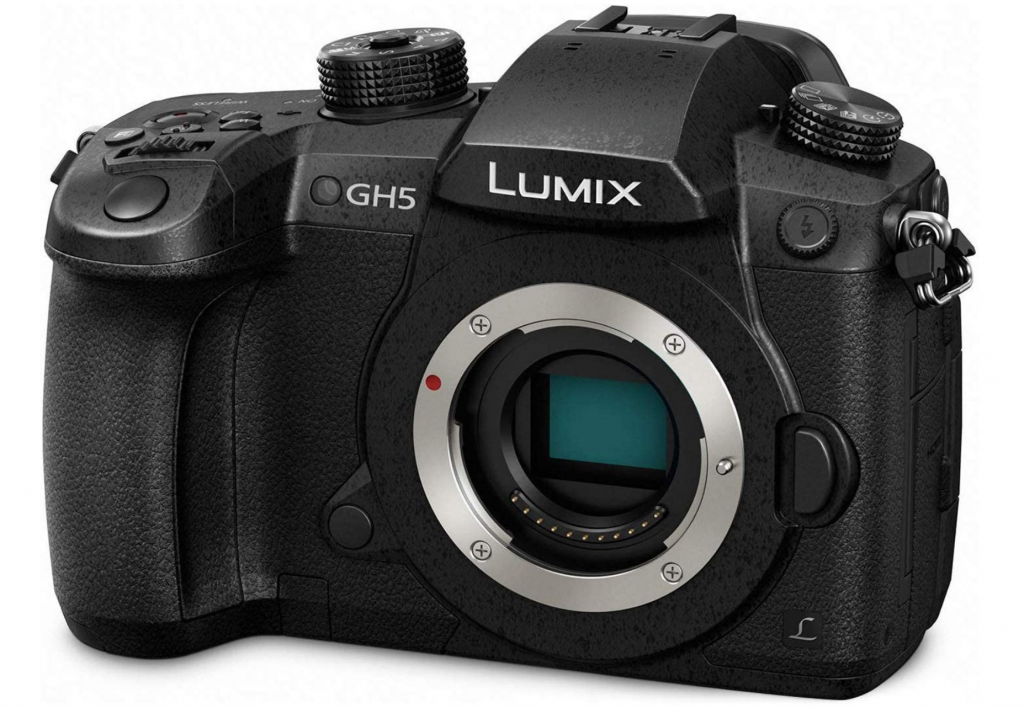- You can always stay in focus
- Easy to use touchscreen
- Plethora of available lenses
- The microphone input lets you get closer
- Stunning 4k Resolution
- In-camera Panning and Zooming (get rid of your slider)
- First-class in-body image stabilization (get rid of your gimbal)
- Focus pulling made easy
- Check that exposure with zebra patterns
- Panasonic ImageApp (mobile app) for the win!
Archives for 2020
5 Reasons You Shouldn’t Buy a GH5 in 2021
Three years after starting my photography and videography journey, I bought a Panasonic Lumix GH5. I got a phenomenal bargain in near-perfect condition from a friend. He added extras that made the deal even sweeter.
These days, there’s many people that want to get into cinematic videos and GH5 happens to be one of those ideal cameras people lust over. It has internal 10-bit 4:2:2, V-LOG, 4K @ 60FPS, a headphone jack, dual SD-card slots, and much more.
The GH5 blows away the competition, and at a low price of $1297 – it’s the best value professional camera.
My journey started with much simpler, yet capable, cameras to earn my rite-of-passage with the GH5.
After shooting with the GH5, I think most people that want this camera don’t actually need it.
They’ve just fallen into the hype and likely feel GH5 will improve their content.
In this article, I cover five reasons why you shouldn’t buy a GH5. If these reasons apply to you, consider the alternatives I’ve listed.
1. You’re a beginner
Whenever I tackle a new subject, I start with the fundamentals and gradually increase my knowledge to gain confidence in the subject. One step at a time, right? If you’re a beginner, the first concept you should master is exposure.
Exposure is controlled through shutter speed, aperture, and iso.
It was my first major lesson in photography and it can be learned on any camera offering manual controls.
There’s many cameras tailored for beginners. Panasonic G7, GX85, G85, and G95 all have manual exposure controls at less than half the price. These cameras are great for beginners and don’t overwhelm you with superfluous features.
Make no mistake, the GH5 is a professional camera with professional features, but if you’re a beginner, consider alternatives to gradually improve your skills.
2. You want to vlog
If your primary goal is to Vlog like Casey Neistat, consider the platform and how your viewers consume your content.
YouTube and social media is largely accessed through 5″ mobile phones. So shooting 10-bit 4:2:2 4K in v-log then color-grading in post for a YouTube vlog about your life is likely not going to take you further than shooting 8-bit 4:2:0 in 1080p (or even 4K). And you could’ve put that time towards something else.
Don’t get me wrong, I’ve recorded many videos in 4K 8-bit at 4:2:0 sampling to be screened on my big-screen Samsung 70″ TV.
However, for YouTube, the majority of your audience won’t notice the difference between image quality. And if they do, perhaps there’s other areas that need improvement.
Does your story-telling need work? Your lighting? Your sound?
Which brings me to the next point about leaving room for gear.
3. You could use the money
The GH5 is expensive. In some cases, as much as by 3x as compared to beginner cameras like the Panasonic G85. Cha-ching!
The GH5 features dual SD cards with a minimum V60-rated UHS II card for 400 Mbps. And guess what, this requires more money.
The GH5 has a v-log upgrade for $100. Again, this is more money… you get the point.
If you’re starting out, consider getting a cheaper camera to put the remaining amounts into lenses, lights, audio and other equipment to further your photography or videography.
4. It’s complicated
This heading could totally be the relationship status with the GH5.
Are you aware of synchro-scan, all-I, v-log, and shutter angle?
Well, did you know the GH5 has 139 settings? That’s right, 139! Many of them are advanced terms and can be overwhelming to learn for the newcomer.
The GH5 also has v-log capability which requires addition color-grading in your video editors, not to mention additional time. So not only is v-log an additional cost, but requires more effort to get the colors right.
Make no mistake, this is a pro-level camera with pro-level features. If you don’t understand the fundamentals, you won’t understand the advanced, complex topics.
5. You’ll need to upgrade… everything
With 400Mbps and v-log, this is not exactly something that can run on your grandpa’s 386 with a turbo-button. For these higher image resolutions, you’ll need quick computing power.
In fact, DaVinci Resolve (free version) doesn’t suport 4:2:2 video files. You’ll need to upgrade to the studio version for $299. You can convert the files to ProRes (or other readable formats), but that’s an additional step.
For higher-end image quality, you’ll want a computer with at least 32GB RAM, 3 GHz processor, a video card with 8 GB RAM, fast SSDs and much more.
In short, you’ll need to upgrade everything. Otherwise what’s the point in getting a $1300 camera and shooting in a mode available at a lower priced camera?
Alternatives
The Panasonic Lumix G7 is the camera that I started with and it is packed with features. I’ve seen sales as low as $500 for this camera and two lenses. It features 100Mbps at 4K (30p/24p). It also doesn’t overwhelm you with advanced features like shutter angle and synchro scan. On these cameras, you simply double the frame rate (30fps = shutter speed of 1/60s).
If you can afford more, I’d recommend the Panasonic Lumix G85. It has HDMI pass-through which allows output to an external device while recording. The G7 lacks this pass-through feature. In addition, the G85 has in-body image stabilization (IBIS).
Obviously this isn’t a comprehensive list, but I believe these cameras are the absolute best-value Panasonic Lumix cameras in 2020. The advantage of owning a camera from the Lumix line is that the features and menu settings build on each other as you upgrade cameras.
Conclusion

The GH5 is a professional camera with professional features and definitely has it’s place. Unless you’ve accumulated some experience under your belt, consider one of the alternatives at a lower price. In the end, you’ll learn a lot more without feeling overwhelmed and can eventually upgrade to the GH5 when you’ve improved your overall knowledge and skills.
Shout-out
YouTuber Guy With Camera helped me convert 4:2:2 MP4s into ProRes. He made a video that uses ffmpeg to convert the files. He provides a script and walks you through creating proxies.
Check out his channel for more helpful videos. Thank you, GWC!
Dragonflies and Sensors: The Quest for Image Quality (Canon vs. Panasonic)
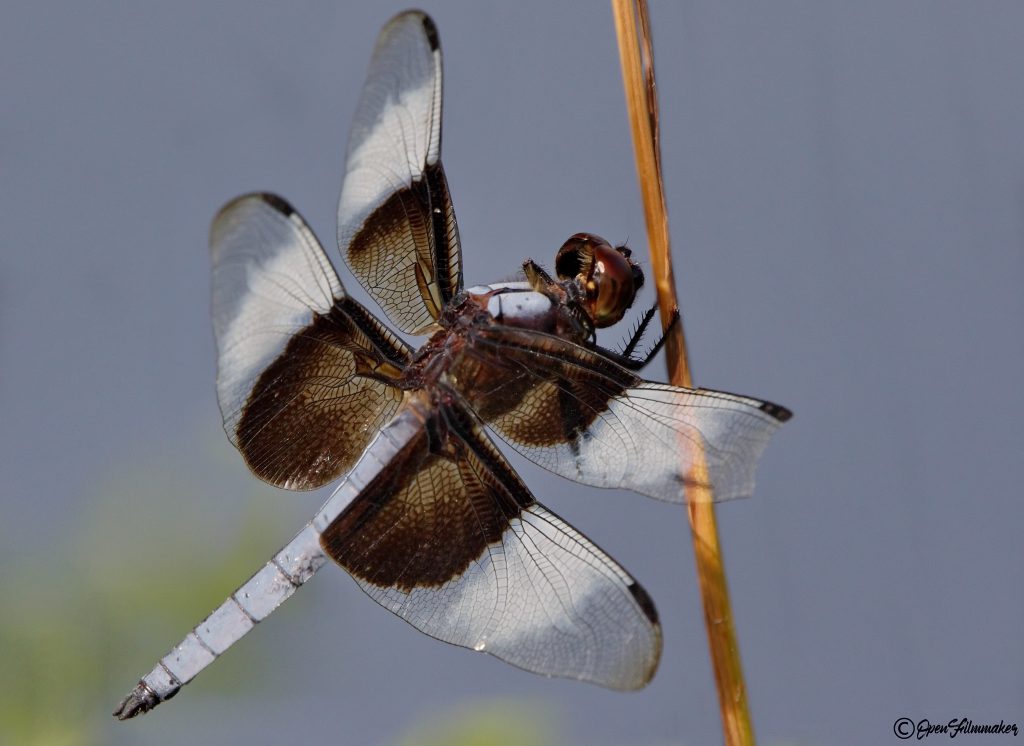
Background
I’ve been shooting birds locally at the Colleyville Nature Center for the past year. I use my Canon 7D Mark II with Sigma 150-600. Sometimes I get there and there’s hardly any birds around. So then I resort to shooting the next best thing… and that’s dragonflies!
So this recent obsession led me to attempt to capture the best dragonfly photo possible. For those that shoot dragonflies or similar creatures, you’ll know that getting insects in-focus is no easy feat.
I researched online and of course macro photography came up often to capture the most detailed photo. I have an Oshiro 60mm macro lens, but these dragonflies don’t allow me to get close. So instead, I resorted to using extension tubes with my Sigma.
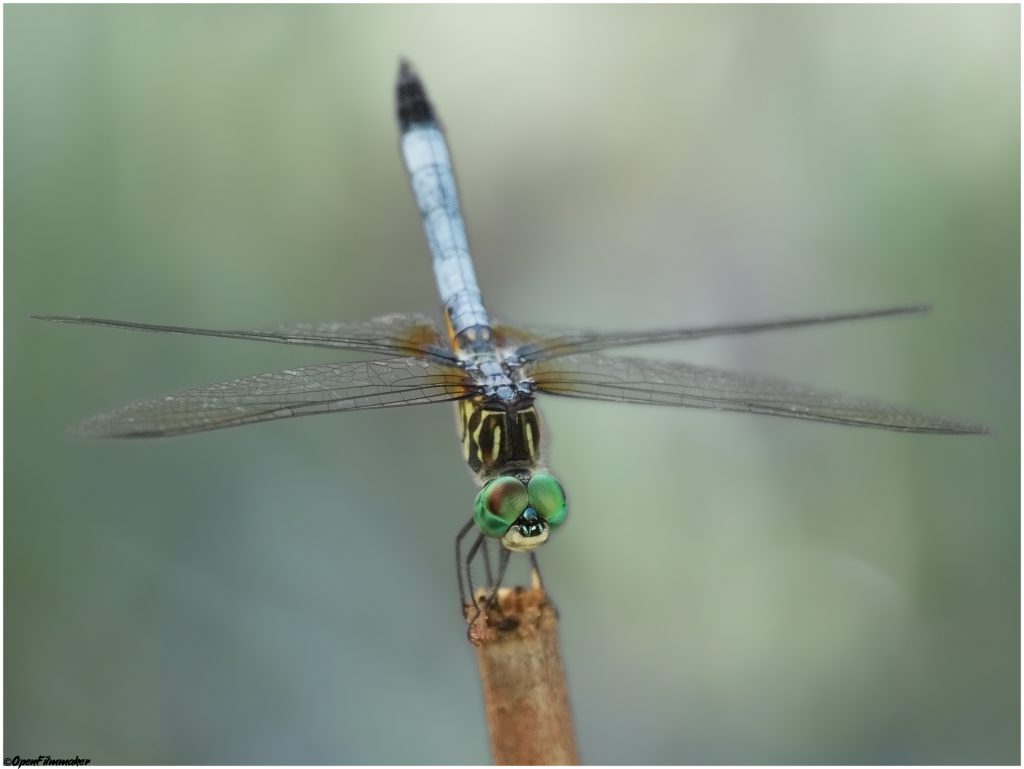
The Problem
I started stopping-down and even focus-stacking. However, there was one problem. While focus-stacking gave me a better image, I found it time-consuming. You see, the editor would align layers automatically, but there was room for improvement and I found myself stacking manually. After manually stacking several times, an idea lit-up in my head. Since I have access to a total of three cameras, I decided to investigate if one camera would give me a better image over another (without stacking).
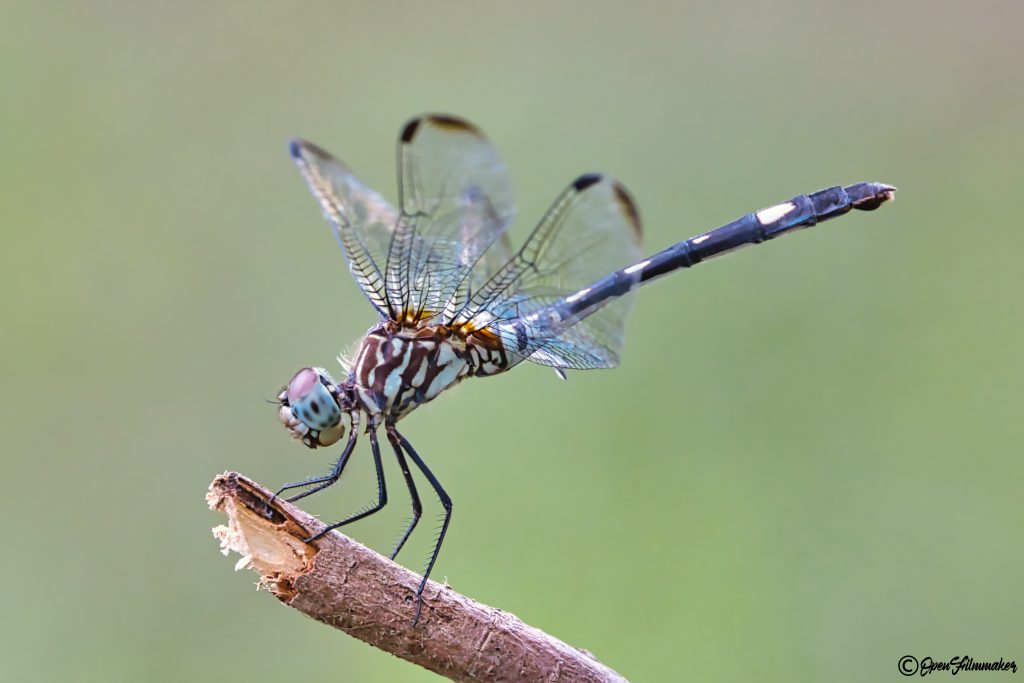
The Quest
The cameras available to me are: Panasonic G85, Canon 7D II and the Canon 5D Mark III. I used the same lens (Sigma 150-600) across all three cameras. This lens has a Canon EF mount so it works natively on the Canon bodies and with an adapter on the Panasonic body.
What’s so special about these cameras? Well, they each carry a different sensor size as shown in the table below.
| Camera | Panasonic Lumix G85 | Canon 7DII | Canon 5DIII |
| Sensor | Micro Four-Thirds | APS-C | Full-Frame |
| Dimensons | 17.3 x 13mm | 23.6 x 15.8mm | 36 x 23.9mm |
If you need more information on how how sensor size affects photography, check out this awesome video by Jim Hamel:
So before I started, my guess was that the Canon 5D Mark III would obtain the sharpest image due to the larger sensor dimensions (gathers more light).
My test is NOT scientific. This is to see what it takes to get the best dragonfly photo (subjective). Needless to say, I was pleasantly surprised at what I found!
A few points about the images:
- All are single images (no stacking), shot RAW and processed manually
- There are two pics from each camera, in random order
- Click on the photos to view full-size and leave a comment on which camera was used for each photo
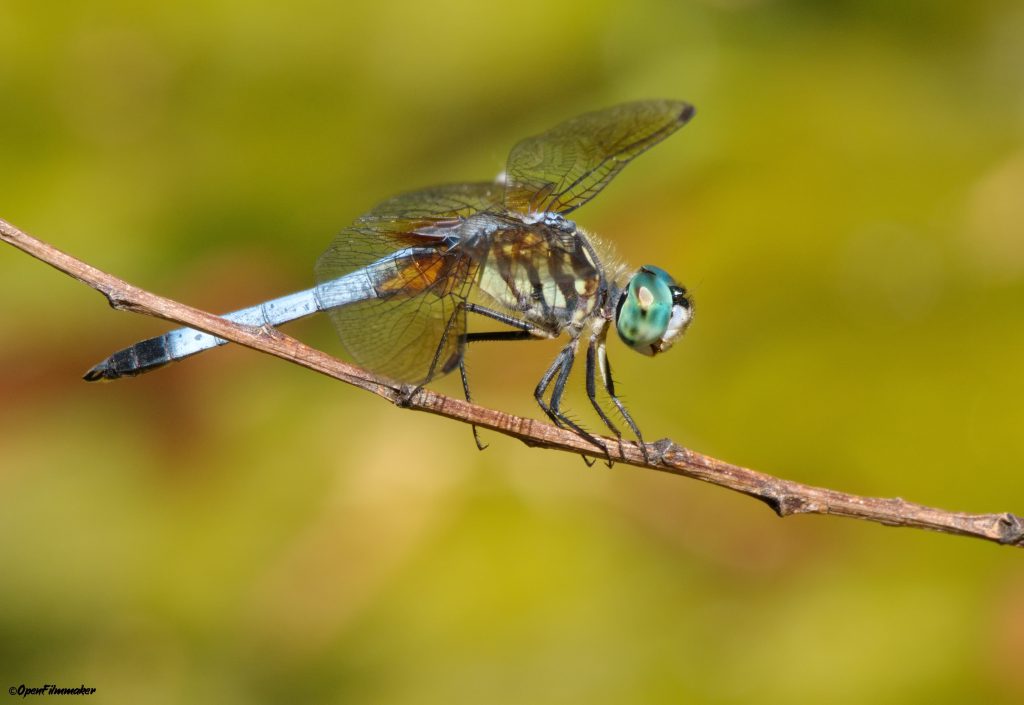
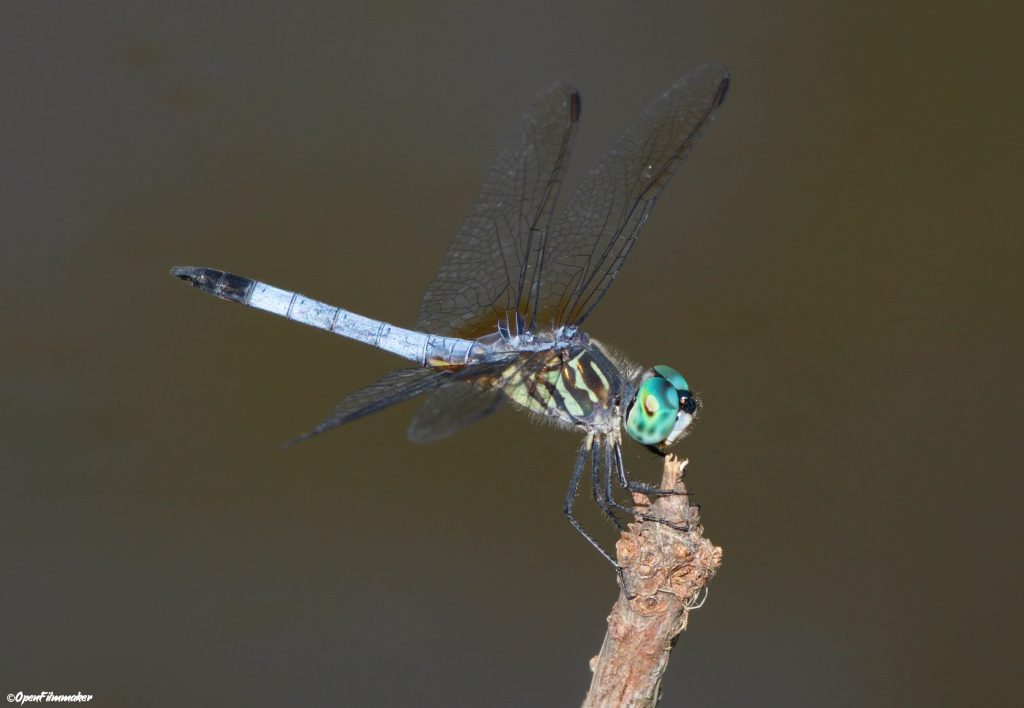
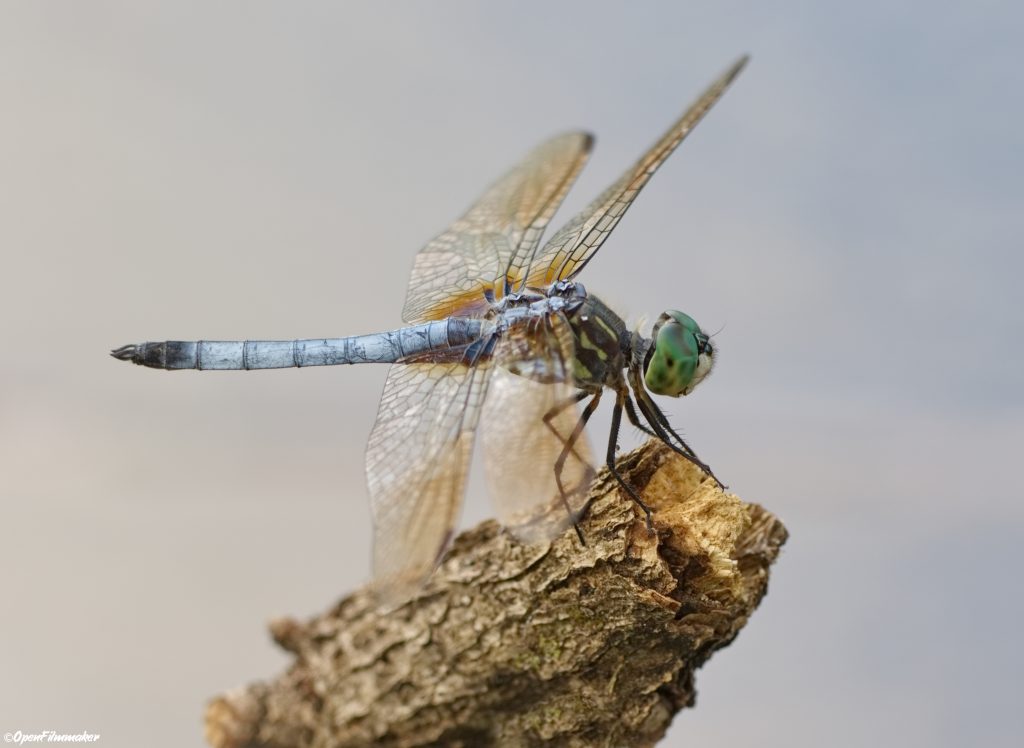
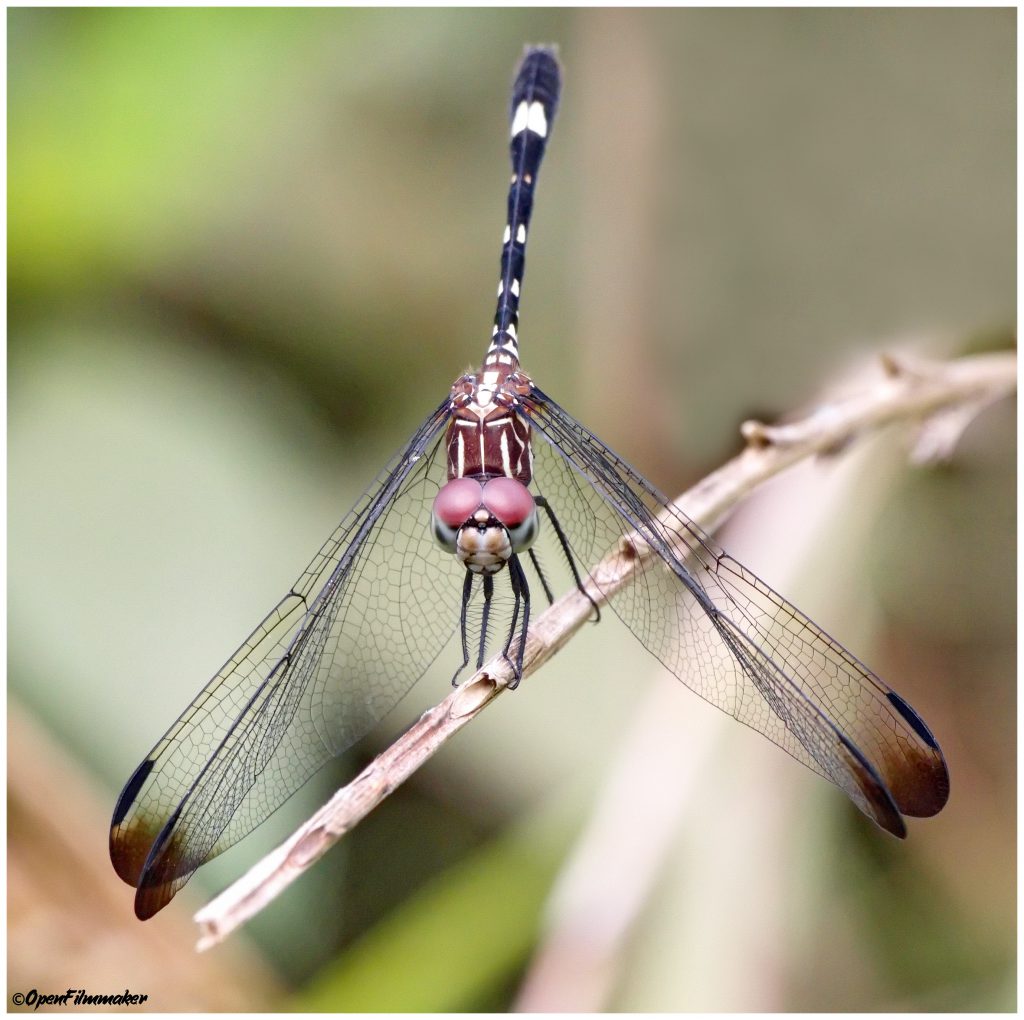
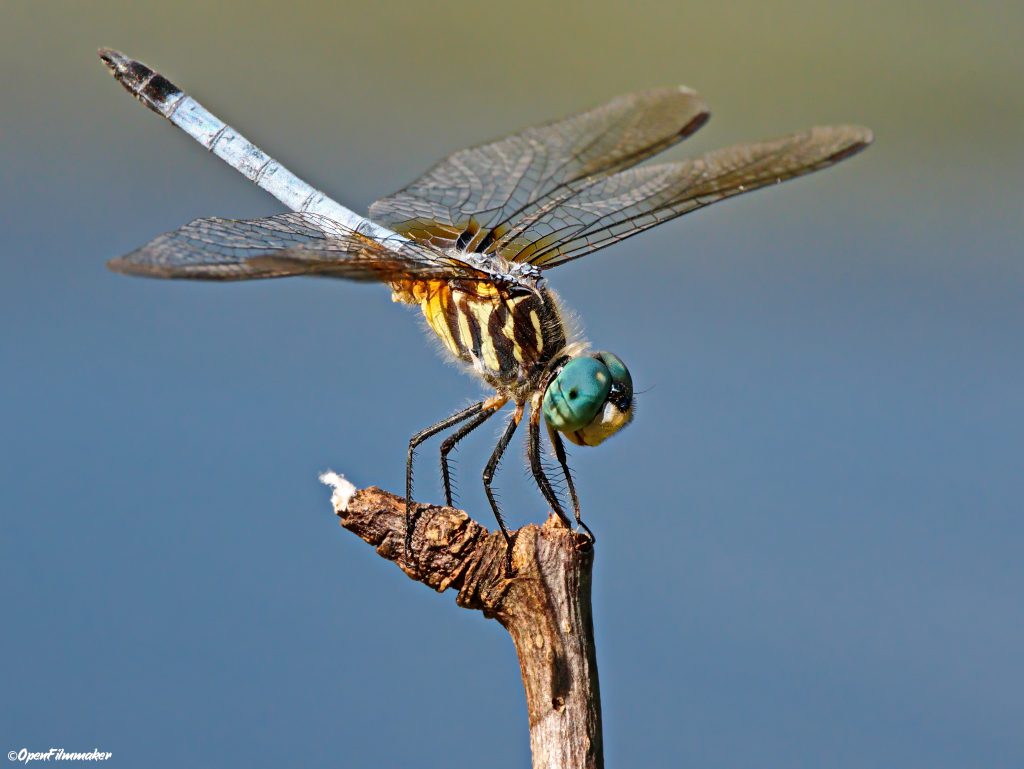
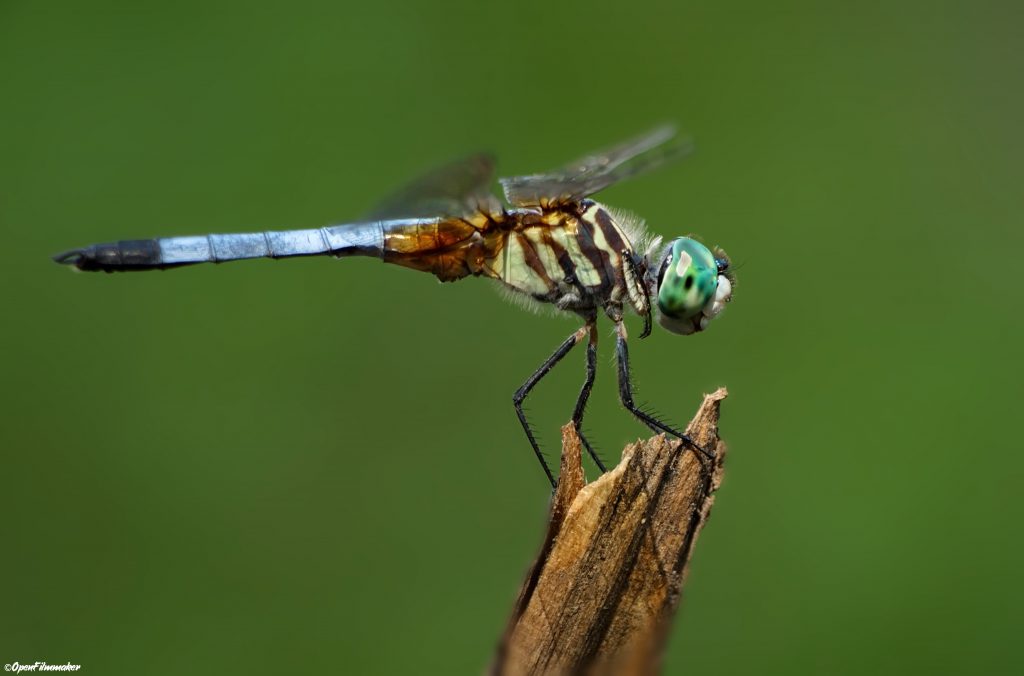
Conclusion
So which camera produced the best image? The reality is that all three cameras give a fantastic image. I was wrong guessing the 5DIII (larger sensor) would produce better images. I can’t tell which photo was taken with which camera. If anything, it came down to good lighting and photography skills, not sensor-size.
Will this experiment end the age-old debate of sensors vs. image quality? I doubt it. But I hope it reiterates what M43 users already know: size doesn’t matter, but the photographer’s skills do.
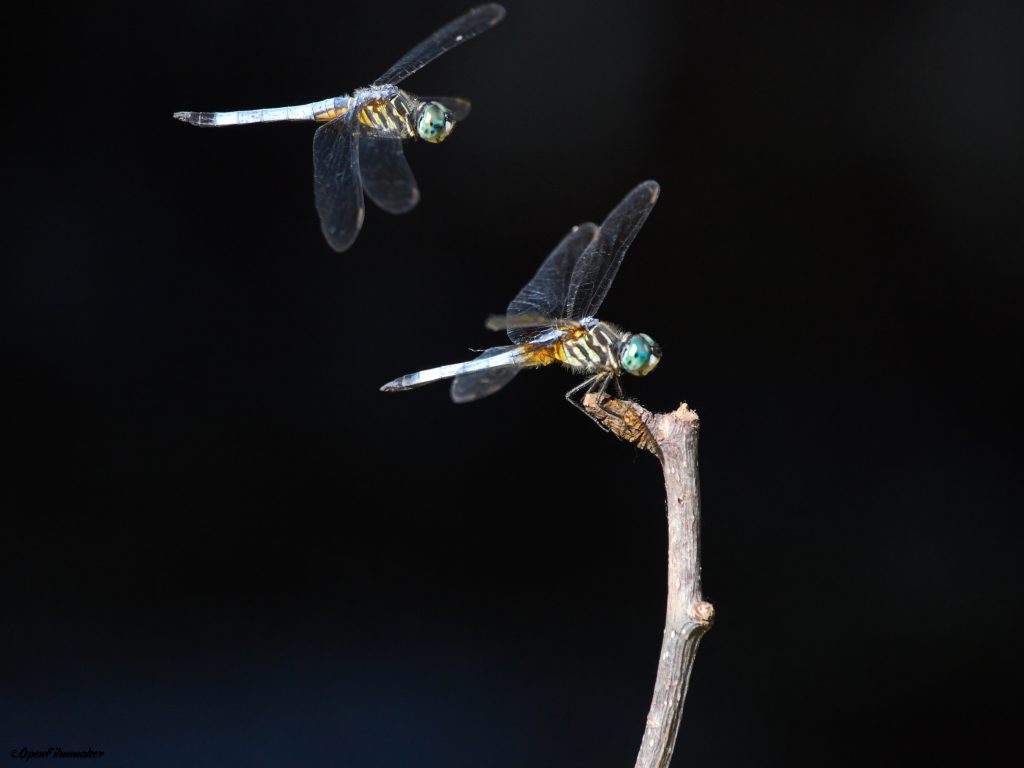
Agree or disagree? Let me know your comments! I’ll post the camera in each photo in a couple weeks.
How to load GH5 4:2:2 files into DaVinci Resolve and Adobe Premiere
The problem
DaVinci Resolve (free version) can’t load 4:2:2 10-bit files. You’ll need the Studio version if you want to skip this hassle.
The search begins
After searching both Google and YouTube, I came across this video from GuyWithCamera that converted the files into ProRes. He later modified the script to also creates proxies. For the full video, see below:
I was able to modify the script slightly and added my Windows instructions in writing (for Mac, see GWC’s video description).
- Download ffmpeg.
- Open notepad in Windows and save the file as “convert.bat” (w/o the quotes) into your folder containing MP4s and MOVs.
- Use Windows command-prompt to run convert.bat to convert all MP4s and MOVs
The script
ren *.mp4 *.mov
if not exist ".\converted\" mkdir ".\CONVERTED"
if not exist ".\converted-proxies\" mkdir ".\CONVERTED-PROXIES"
for %%A IN (<em>.mov) DO ffmpeg -i "%%A" -c:v dnxhd -vf "scale=854:480,format=yuv422p" -profile:v dnxhr_lb -c:a aac ".\converted-proxies\%%A" for %%A IN (</em>.mov) DO ffmpeg -i "%%A" -c:v prores_ks -profile:v 3 -c:a aac ".\converted\%%A"
pauseSummary
If you have trouble loading your GH5 4:2:2 MOVs/MP4s, try the script above. Otherwise, you can always shell out the money to get DaVinci Resolve Studio.
Good luck!
Cameras on a Budget in 2020
My photography and video journey started in 2017, with my first mirrorless camera, the Panasonic Lumix G7. I bought it with the intention of making short-films and other videos. Shortly after, I realized I’d much rather spend time with my kids so the filming took a back seat and OpenFilmmaker was created.
With the current quarantine situation, what better to do than reflect on my journey? I figured I’d put together a list of recommended cameras for both beginners and advanced shooters. Remember, this is a biased article. I love the M43 cameras for their portability and quality, especially for video.
You’re probably wondering why these cameras are so special? Well, take a look at the 25-Reasons Article. Long story short, these are great quality cameras delivering 4K at 100 Mbps (that’s pretty fantastic). With the exception of the GH5 which goes up to 400 Mbps.
Video (Filmmaking and YouTube)
I started with the Panasonic G7. It’s a phenomenal camera for YouTubers and short filmmakers. If you’re on a budget, this is the way to go. Now, the biggest issues with the Panasonic system is the Contrast-Based Auto Focus. For that reason, I need to mention the Sony cameras.
Sony A6xxx Series
If you’re expecting your video to always be in focus without putting any work into it, the Panasonic G7 is not the camera for you. For lazy focus-ers, you should check out the Sony A6100, A6400, or A6600. You will love their Auto Focus system.
Panasonic G7
For everyone else, there’s the Panasonic Lumix G7. While I used the G7 to take a lot of photography, it’s not really something I would recommend. This is due to my experience with it’s mechanical shutter. My G7’s mechanical shutter was starting to get stuck so I changed it over to electronic shutter, which has negative image quality results, but the beginner will likely not notice.
The G7 doesn’t feature In-Body Image Stabilization. The lenses have Optical Image Stabilization, which is better than not having stabilization. If you plan on moving the camera or need more of a vlogger setup, then take a look at the Panasonic Lumix G85.
Panasonic G85
The Panasonic Lumix G85 is recommended here because of the quality, features, and low price-point. Reigning over the G7, this camera includes an upgraded electromagnetic shutter, removal of the anti-aliasing filter, and In-Body Image Stabilization. It’s worth every penny of the upgrade over the G7.
I’d recommend the G85 over the G7 any day. Check the links in this article for the prices. If you’re on a budget, you could even get the G85 with the two lens bundle and sell the second lens (keep the 12-60mm). Just a thought!
Panasonic GH5
If you already have video skills and want to go pro, then the Panasonic Lumix GH5 / GH5s would be the cameras for you. I’ve watched many videos on these cameras and the GH5 is currently on my watchlist.
Summary
Whether you’re making vlogs, short films, or family videos, these Panasonic cameras have you covered. Most of the videos on my YouTube channel were shot with these cameras. Check it out to learn more on what these cameras can do!
